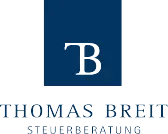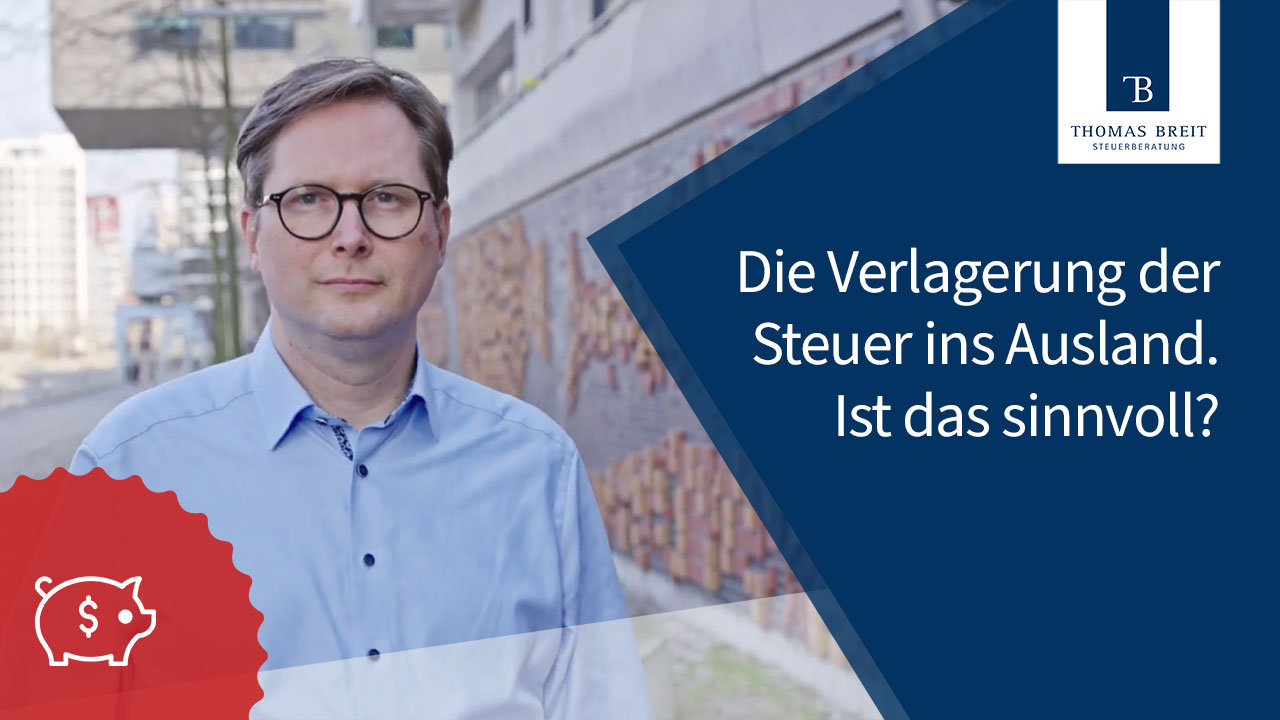What tax structuring options do you have as a limited liability company (GmbH) owner? Does optimization only make sense for large companies with profits in the millions? Or can smaller GmbHs also reduce their tax burden?
After more than 15 years working as a tax consultant in Hamburg, I know the uncertainties that many entrepreneurs have about these and similar issues only too well.
Therefore, in this article, I would like to provide clear and simple answers to the questions my clients most frequently ask about tax structuring without cumbersome “legalese”.
One thing I can tell you right away: Tax structuring makes sense both for large GmbHs with profits in the millions and for smaller GmbHs whose profits are in the five- or six-figure range.
However, the concrete tax structuring measures for large & small GmbHs differ greatly. In this article I will explain why.
Here you will learn in detail:
- What tax structuring is
- How the tax burden is calculated for GmbHs
- How to reduce the tax burden with tax structuring measures
- Four tax structuring measures that are suitable for all GmbHs
- Two tax restructuring measures that are only suitable for large GmbHs
- The tax structuring measures I would advise you against
- The mistakes you must avoid at all costs in tax structuring
This post was updated on 26 July 2021.
What is tax structuring?
In simple terms, tax structuring is an activity aimed at reducing your tax burden, without violating applicable laws (e.g. Income Tax Act, Corporate Income Tax Act, Trade Tax Act or the Limited Liability Company Act).
It is essential here to have expert knowledge and a lot of experience, because the boundaries are often fluid between legal tax structuring and illegal tax fraud.
In order to know where to start with your tax structuring measures, you must first know how taxes are calculated for a GmbH.
How is the tax burden calculated for GmbHs?
For GmbHs, the profit in a fiscal year is always used as the basis for calculating taxes. Your profit is of course what is left after you subtract your costs and expenses from your income.
The tax on your profits consists of 15% corporate income tax and approximately 15% trade tax. Approximately 15% because the trade tax in Germany is not standardized and varies from state to state.
If the profit is paid out to the shareholders of the GmbH, an additional 25% in capital gains tax, solidarity surcharge and church tax are also due.
In total, you arrive at a tax rate of about 49% of distributed profits.
How can you reduce your tax burden with structuring measures?
The higher your profit, the higher your tax burden.
This is exactly where structuring measures come in: These methods aim to keep your taxable profit as low as possible.
Since large GmbHs generally report higher profits, there is also more potential for optimization with these companies. Here it can be worthwhile to set up an asset-managing GmbH or a holding company with the help of corporate transformation.
Proven strategies for small GmbHs are, for example, taking advantage of special regulations, such as an investment allowance (more on this below) or the clever “deferral” of expenses.
Through accounting measures, it is possible to claim a large part of the expenses for the storage of business documents in only one fiscal year, for example. I will also explain this in more detail in the following section.
These four tax structuring methods are suitable for all limited liability companies
1. Investment allowance (Investitionsabzugsbetrag)
The investment allowance allows you to already write off against tax 40% of the costs for planned purchases three years before the actual purchase. This means: If you plan to buy a company car in three years, you are allowed to use 40% of the anticipated purchase price to reduce your profits now.
What’s more: At the end of the three years, you can immediately deduct another 20% of the purchase price from your profit.
By using the investment allowance, you can therefore immediately claim 60% of the purchase costs against tax, even though these costs have not yet been incurred.
Please note, however: In order for you to actually be allowed to use the investment allowance, your GmbH must fulfil two conditions:
- Your equity must not be greater than €235,000
- Your profit must not exceed €100,000
In addition, you must then actually purchase the planned item. Merely planning and deducting the anticipated expenses without a purchase is not permitted.
2. Make provisions for the storage of business records
According to Section 6 German Income Tax Act (EStG), provisions may be made for costs incurred for the storage of business documents.
These deductible costs include, for example, expenses for scanning documents, rental costs for storage space, and also costs for a server, if needed.
Please note: This provision is usually set up for several years at once. It therefore gives you the opportunity to write off future expenses against profit now.
This type of provision is therefore excellent for “shifting” expenses from one period to the next.
3. Write off “slow sellers”
If you sell seasonal goods and the value of your products reduces significantly after some time, you can write off this loss in value against tax. To do so, however, you must be able to prove that the value of your merchandise has actually declined permanently.
If this requirement is met, you can enter a lower value of the goods for tax purposes and write off the loss.
This will reduce your profit and save you taxes.
4. Convert your “normal” GmbH into an atypical silent GmbH
With an atypical silent GmbH, you pay only 42% tax on profits of up to €260,533. Compared to the 49% for a “normal” GmbH thus saving you 7% in taxes.
However: An atypical silent partnership is only worthwhile if you get the right silent partner on board. “Atypical” in this case means that the silent partner profits from any growth in the value of the company and has co-entrepreneurial rights.
You should therefore consider this type of corporate transformation very carefully beforehand. Because, if you quarrel with your silent partner, they may interfere in the management of your company in an undesirable way. And this would probably cancel out any of the advantages.
I have written a separate blog post on the atypical silent GmbH, there you will find everything you need to know about this option, including all the golden rules and pitfalls.
Just click on the following link to get to the article: https://www.steuerberatung-breit.de/atypical-silent-partnership-with-a-limited-liability-company-gmbh-more-liquidity-less-taxes/
An easy-to-follow video with two bonus tips!
In addition to the tips from this post, would you like to know some more ways that you can structure taxes as a business owner? Then my video on tax structuring is for you.
In this video, I explain my Top 6 ways to structure taxes for limited liability companies. So, in addition to the four methods explained in this article, you’ll get two bonus tips to boot!
Interested? Then just press play!
These two restructurings methods are particularly suitable for larger GmbHs
1. Transfer real estate, investments, and other assets to an asset-managing GmbH
Are your rental properties, houses, shares or other assets in your private assets or in your operating GmbH? Then you could benefit from restructuring.
Because if you transfer your assets to a so-called asset-managing GmbH, you can reduce your tax rate on profits from these assets by 20-40%.
Because, with this particular form of corporation, you benefit from trade tax and corporate tax reductions. Only when the profits are distributed is 25% corporate income tax payable. As long as the profits remain in the business, then all income is in fact completely tax-free.
However, since establishing and running an asset-managing GmbH is costly, it is only worthwhile with assets of over €500,000.
2. Bundle all your businesses together with the help of a holding structure
As the owner of multiple businesses, it may be worthwhile from a tax point of view to create a holding company. This holding company (also known as a parent) becomes the owner of your existing businesses, forming an umbrella, so to speak, under which all your companies are combined.
From now on, all your existing companies will be subsidiaries of the holding company.
This has the following advantages:
- Combined taxation of all profits and losses
- Tax-free distributions from subsidiaries to the parent company
- Enhanced public image
- Prevention of hidden profit distribution
- Prevention of fragmentation of the corporate group in the event of death
As with the asset-managing GmbH, however, the establishment and ongoing accounting of a holding company is also associated with high costs. Therefore, setting one up is only recommended with profits of at least €200,000.
In addition to the profit, there is another point to consider with “parent-subsidiary dependency”.
What exactly is meant by this and the details you have to consider when establishing a holding company are summarized for you in a separate article: https://www.steuerberatung-breit.de/holdings-when-are-they-an-advantage-and-when-do-they-pose-a-risk-for-limited-liability-companies/
Tax structuring methods I would advise against
Using your private car as a company car: If you use your private car in the course of your work as a managing director of your GmbH, you can deduct all of the costs for these journeys from your profits.
To do this, however, you must keep a logbook and document all trips in detail.
The problem: The driver’s logbook is almost always contested by the tax office. You will always have to justify which trip was actually for business and be queried on where you might have cheated. In the worst case, the logbook can even be rejected by the tax office and you lose all your tax benefits.
Then you are forced to take 1% of the original new price of the car as income every month and thus increase your taxable profit.
Renting your own office at home to the GmbH: Here, you would rent a room in your private house or apartment as an office to your GmbH. Your company then pays you rent for that room and that lowers your company’s taxable profit.
The problem: This makes your personal property subject to tax for the portion rented to the GmbH. If you sell your apartment or house, this part of the proceeds must be taxed. In the end, this approach often cancels itself out and you don’t really save anything.
Relocating your company abroad for purely tax reasons: If you move the registered office of your GmbH abroad, you are liable to pay taxes in that country and can benefit from lower taxes.
The problem: In order to really only have to pay taxes in this new country and not also in Germany, you are only allowed to stay in Germany for a maximum of 183 days per year. The German tax office takes a very close look at this and in the worst case you will have to prove every time you entered or left the country.
In addition to this, of course, you have to factor in moving expenses and an enormous amount of time to organize the entire relocation.
I explain moving your business abroad and the tax consequences in more detail in a separate video, and highlight when it actually makes sense to relocate your company headquarters. Then just press play!
The two biggest mistakes entrepreneurs make when it comes to tax structuring
Mistake 1: Your planning is too short term
Do you think that your assets are too small to actually benefit from an asset-managing limited liability company or a holding structure? That’s probably true for your current situation. But what about the future?
If you expect strong growth in your assets in the next few years, it may be worthwhile for you to create tax-saving structures now.
This is because you will immediately benefit from all the advantages, and your asset growth will be perfectly optimized for tax purposes going forward.
Mistake 2: You implement too many measures too quickly
The biggest mistake you can make after reading this post is to carry out too many of my suggestions immediately.
This is because if you restructure, use the investment allowance, set up provisions and write off slow-moving items all within a short space of time, the tax office will assume that you have a so-called “overall plan”.
And according to Section 42 German Fiscal Code having an overall plan is not permissible and represents an abuse of tax structuring methods. In this case you would be liable for prosecution for tax fraud.
This is why you must always proceed with caution when it comes to tax structuring. Create a precise plan with your tax consultant, which you work through step-by-step over a period of at least two years.
Conclusion: Tax structuring is possible for all profitable GmbHs
That only large companies benefit from tax structuring measures is a myth. The only thing that is absolutely necessary for tax structuring is that your company makes a profit. Otherwise, you cannot optimize your tax.
One thing is clear, however: The more elaborate restructuring measures, such as setting up a holding company or dividing the business into different legal forms (asset-managing GmbH), only pay off when profits are in the millions.
If your profits are in the five- or six-figure range, these tips are better for you:
- Use the investment allowance and thus write off planned expenses in advance
- Build provisions for future costs for document storage (rental, heating, or server costs, etc.)
- Write off goods that permanently lose value after the season
- Convert your “normal” GmbH into an atypical silent GmbH and thus reduce your tax rate from 49% to 42%
Which of these methods is in fact the right one for you, however, can only be determined by an experienced tax consultant after detailed analysis of your company. This article is only intended to serve as a guide for you.
If you have any further questions about the methods I have presented here or if you need help with the implementation, I will be happy to assist you.
For a personal consultation you can reach me anytime by phone (+49 40 44 33 11), e-mail (anfrage@steuerberatung-breit.de) or via my contact form (click here).
Kind regards,
Thomas Breit
Photo: © contrastwerkstatt – stock.adobe.com





